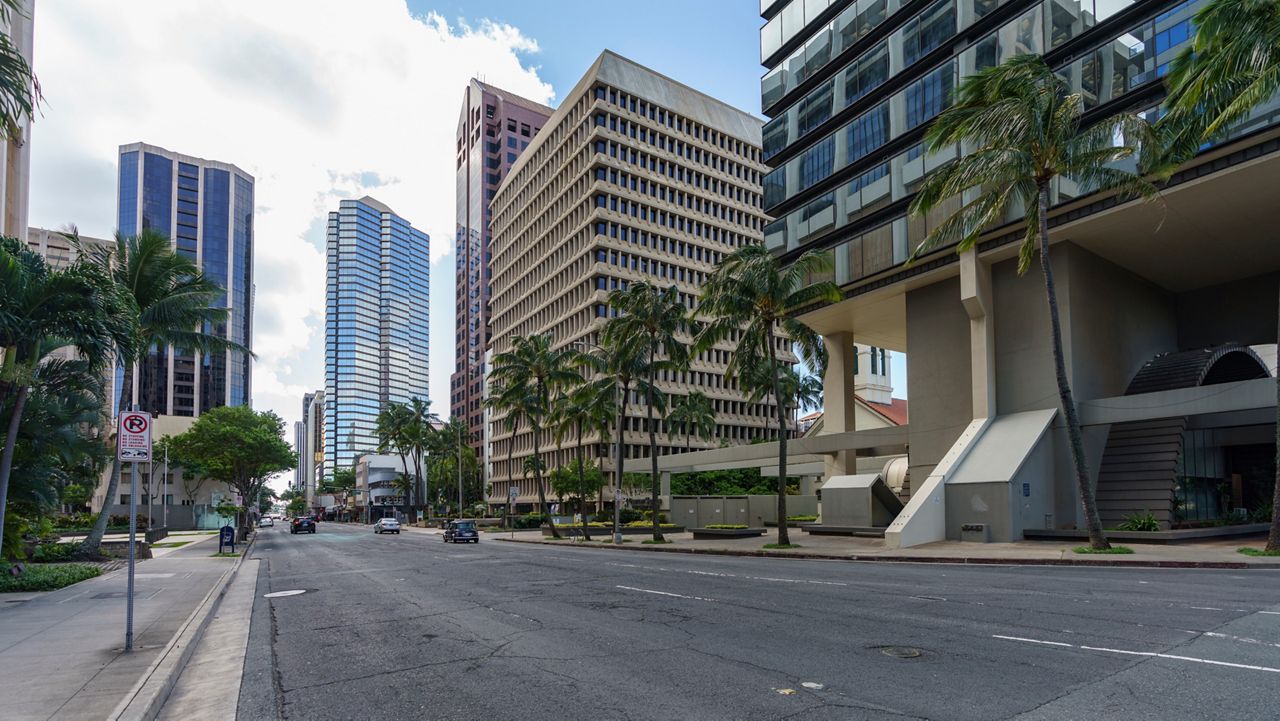The latest economic forecast from the University of Hawaii Economic Research Organization is a mix of the good, the bad and the remains-to-be-seen.
While international tourism continues to recover, an expected decline in domestic travel related to a projected contraction of the U.S. economy and higher interest rates and prices will cause local growth to weaken through the first half of next year, according to UHERO’s first quarter report “Hawaii’s Soft Landing Still in the Cards.” Despite that weakening, the state is expected to avoid a recession.
And while inflation locally and nationally appears to have peaked, whether it will continue to recede will determine if the Federal Reserve pushed interest rates higher and for longer, which could lead to a sharper slowdown in Hawaii.
UHERO found that Hawaii’s tourism industry is making “substantial” progress after an Omicron-related lull. Inflation-adjusted visitor spending had recovered by the second quarter of 2022, with the average daily census following by September. Healthy fall numbers flattened in the fourth quarter of the year, leaving total visitor arrivals within 8% of 2019 levels.
The end of Japanese travel restrictions has led to a modest improvement in Japanese visitor numbers for the first time since the pandemic started.
However, as the report notes, “there is still a long way to go in resurrecting this market. Part of the end-of-year strength may be due to returning Hawaii residents who took advantage of the relatively strong dollar and relaxed travel regulations.”
Inflation-adjusted real visitor spending was strong throughout 2022, buoyed by increases in room rates and a strong visitor census. Visitor services, such as air travel and restaurant dining, have also risen faster than overall inflation in the state. Total real visitor spending for 2022 was just 3% below its 2019 level.
Per visitor, spending now exceeds its pre-pandemic level by 2.6%., according to the report.
“A rapid rise in per capita U.S. spending has partly offset the low number of traditionally higher-spending Japanese visitors,” the report stated. “However, with savings accumulated by U.S. households during the pandemic now dwindling, continued recovery of the Japanese market remains crucial to maintaining a robust level of travel spending. Thankfully, the partial reversal of last year’s dollar rally should make a U.S. trip at least slightly less painful for international travelers.”
After expanding by more than 4% this year, the average daily visitor census will contract by nearly 2% in 2024, before a modest pickup, UHERO projected. Real visitor spending will also turn from a moderate gain this year to a small decline next year.
Other highlights from the report:
Payroll employment still lags behind pre-pandemic levels, but Kauai and Maui have now caught up with Oahu and Hawaii Island. Recent wage gains have been largest in tourism, where employment still lags pre-pandemic levels by a considerable margin.
Many sectors will see weaker job growth over the next two years, but there will be some firming of growth heading into 2025. The construction industry will benefit from a very large stock of public construction projects in the works. This will help offset losses from the weakening domestic visitor industry.
Education losses during the pandemic disproportionately burdened students from lower-income households, raising concerns about increased future income inequality. Income tax reform and various housing initiatives proposed by Gov. Josh Green could help address some of these issues.
Inflation on the islands has been less severe than on the U.S. mainland but has still significantly affected purchasing power. That combined with the loss of pandemic support programs resulted in a decline in real personal income of more than 6% last year. As inflation continues to recede, real income will begin to recover, firming to the 2% range by 2025.
“The near-term outlook is not without risks, particularly more aggressive Fed tightening,” the report stated. “Still, our state’s relatively healthy footing puts us in a position to begin the hard work of addressing longer-term challenges. These include the visitor experience, questions of tourism capacity, housing cost and availability, our aging population and adjustment to climate change,”



